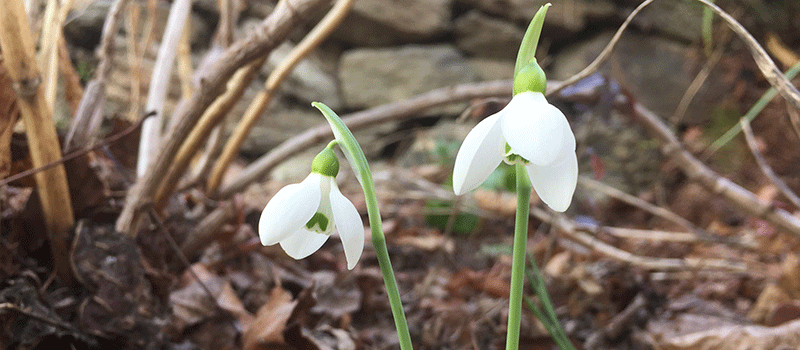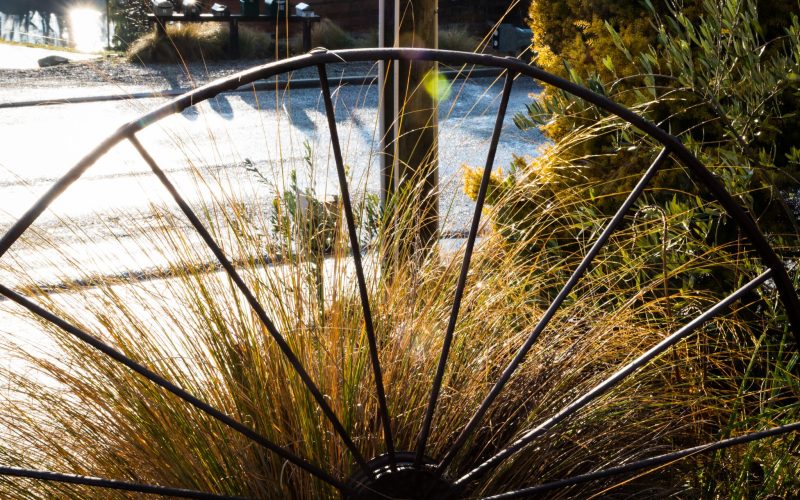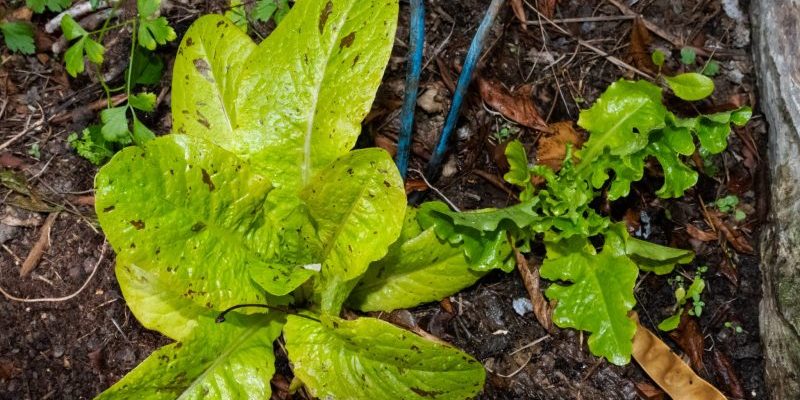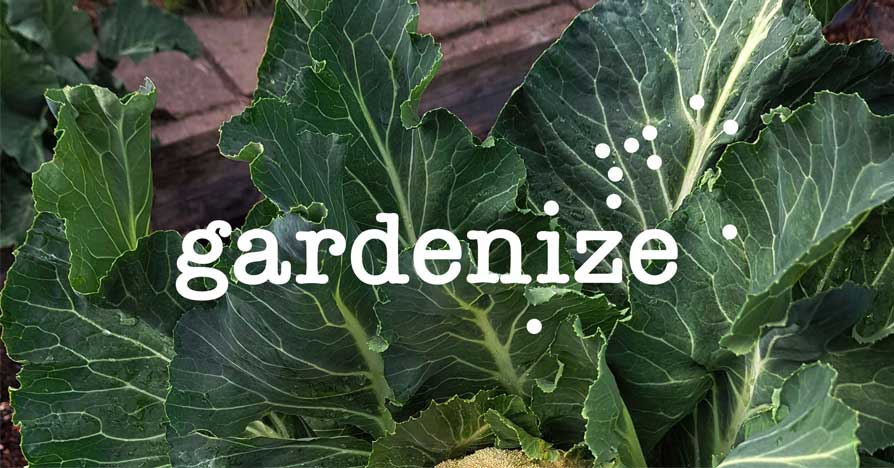Upside-down gardening: August in Central Otago
Winter vegetables and herbs, spring flowers, seeds to sow in August

Spring flowers
I went out with my camera on a cold, grey day in early July and it seemed spring would never be here. I could see that New Zealanders further north were already posting photos of their camellias and was longing to see ours. It cheered me to see that the daphne mezereum had produced its first flowers and plenty of buds, even in the sleet.
Pulmonarias

Of course, by late July, the first snowdrops had arrived, with these charming pulmonarias following soon after. I have written about these before, but now, by splitting them up, I have managed to make a fairly coherent-looking row of them in the narrow terrace near the back door. I find the options for garden design rather limited in a narrow border: the most obvious thing to do seems to be to have rows of plants in strips, including early and late-flowering ones, with bulbs underneath. When you start with only one or two of each variety, it comes naturally, when you divide them or take cuttings, to spread out the young plants in the same bed as their mother. The back of this border has some very young currant bushes grown from cuttings. I hope the currants will provide a little shelter for the flowers at their feet and that they will make this border more productive.
Vegetable gardening through winter
Greens
Even in the winter, the garden still supplies us with fresh food. My plot isn’t big enough for us to become self-sufficient, but it is very satisfying to pop out to the garden for healthy food, grown without scary chemicals, and as fresh as it is possible to be. It’s worth noting which ones survive the winter, so that you can plan to have young plants ready by autumn next year.
Kale
I have about five self-sown kale plants and that is enough to supply greens through winter and early spring. They are extremely easy to grow, needing no attention at all. Mine suffered a brief infestation of aphids in late autumn, but I watched a flock of sparrows descend upon them one cold day, and the next day the pests were gone. The best way to harvest kale is to begin by taking green leaves from below the tightly packed, paler tip. As the plant matures, you can just follow the leaves up the stem, so you end up with a bare stem with fresh young leaves at the top. I like to strip the fleshy parts of the leaves off the tough midrib and then put them in a bowl of boiling water to blanch them. Once the leaves are blanched, you can add them to omelettes, stir fries or pasta.

Lettuce
I sowed this lettuce in autumn, and it has survived all winter in a sheltered spot in the garden. On the day I took this picture, there was sleety snow all around. If you take just the lower leaves each time, you can make the plant last longer and have a handful of fresh leaves every day. Great for winter lunches.

Celery and fennel
I’m still picking celery, and I can see that there will be fennel ready to take over when (or if) the celery ever stops providing me with delicious crispy stalks and aromatic leaves. On frosty mornings, the celery stalks bend right over and the whole plant looks dead, but as soon as the sun comes out, the stalks straighten and they’re good to go again.
Apple mint
Even more than all the other mints, apple mint grows like a weed if you plant it directly in the border. Its long roots spread underground and produce more plants everywhere. It is extremely hardy though, which means that even in winter, I can pick some every day to make a herbal tea or tisane. There is no need to use little bags of dried herbs for tea: just pick a sprig of mint, put it in a cup and pour boiling water over it. By the time the tea has cooled enough to drink, it will have enough flavour to be enjoyable. Most people find that all mints are good to for the digestive system.

Other herbs
Some of the softer herbs will not be ready yet, but rosemary, sage, parsley, thyme and bay can be used straight from the garden right through the year, so you still have a variety of flavours and important nutrients.
Jobs for August
As the days grow longer, the garden comes to life, and so do the weeds. You will probably be able to find the time to weed little and often. Keep it up, so that the spring flowers can really show off. I plan to buy a few more of those simple, five-dollar weeding tools and to leave them in strategic places around the garden. That way, if I am returning home and I see some couch grass or vetch, I can deal with it straight away without having to unlock the shed. Weeds with smaller root systems, like cleavers and annual grasses can be pulled up without the need for tools, especially at this time of the year when they are still small. Just drop them on the ground, where they can return their nutrients to the soil.
– Set up your irrigation systems. Set the timer to water a little every other day. Just before dawn is best.
– Buy your seed potatoes and leave them in a warm part of the house in eggboxes or a tray to develop sprouts.
– Plant out any seedlings that are ready or pot them on into more nutritious potting compost.
– Sow seeds: broad beans (if you don’t have enough from an autumn sowing), cabbage, radish, swedes, shallots, New Zealand and English spinach and strawberries. The seed producers recommend starting all of these except broad beans indoors, but I am having such a lot of success sowing seeds in milk bottles and keeping them in a sheltered spot outdoors that I will mostly continue to do that, leaving my windowsills free for houseplants and tender succulents. Try a few early sowings of hardy flowers, reserving some seeds for a second try in September. Remember that September and October are very busy times for seed sowing, so it’s good to experiment with starting some of the hardier ones early.

About the writer
My name’s Pamela and a few years ago, at the age of 55, I made the decision to start a new adventure. I left the northwest of England, where I had lived all my life, and moved to New Zealand. I’m excited to be a guest blogger on Gardenize, and I love writing about my garden in beautiful, sunny Alexandra in Central Otago. My garden here is about as different as it could get from the damp, shady garden I left behind. Central Otago is the hottest, driest, coldest area in New Zealand, as we have hot summers and cold winters, along with a semi-arid climate. The area is famous for its orchards and vineyards. It has many quaint little rural townships with pretty cottage gardens featuring peonies, bearded irises, hollyhocks, lilies, roses, and lavender that grow so well here. The landscape is spectacular, with dry, rocky mountains and impossibly blue lakes and rivers. The dry mountains look barren, but they’ve actually covered in tough little thyme plants: a great clue to what might grow well in the garden.
GARDENIZE GARDEN APP
A gardening friend with a green thumb and photographic memory
Gardenize is an app for gardening and cultivation that helps you to overview, understand and develop your garden and your gardening skills.
Order makes it easier to succeed and Gardenize structures information and photos and makes it searchable for you. You also get tips and inspiration from other Gardenizers around the world.
Gardenize is free to use and you can download Gardenize from the App Store or Google Play, or create an account the Gardenize web app for web browsers.
Get to know Gardenize better here.



